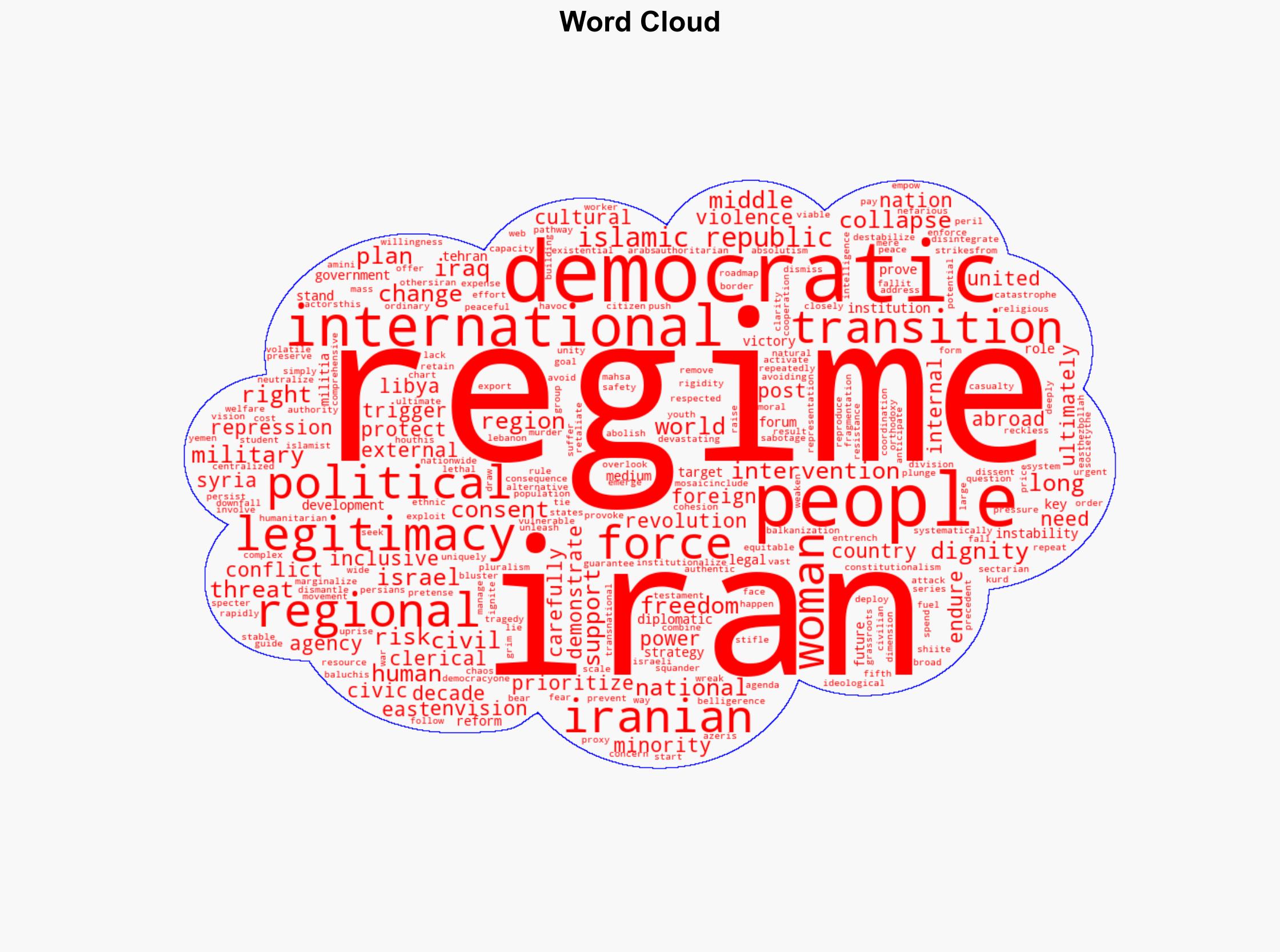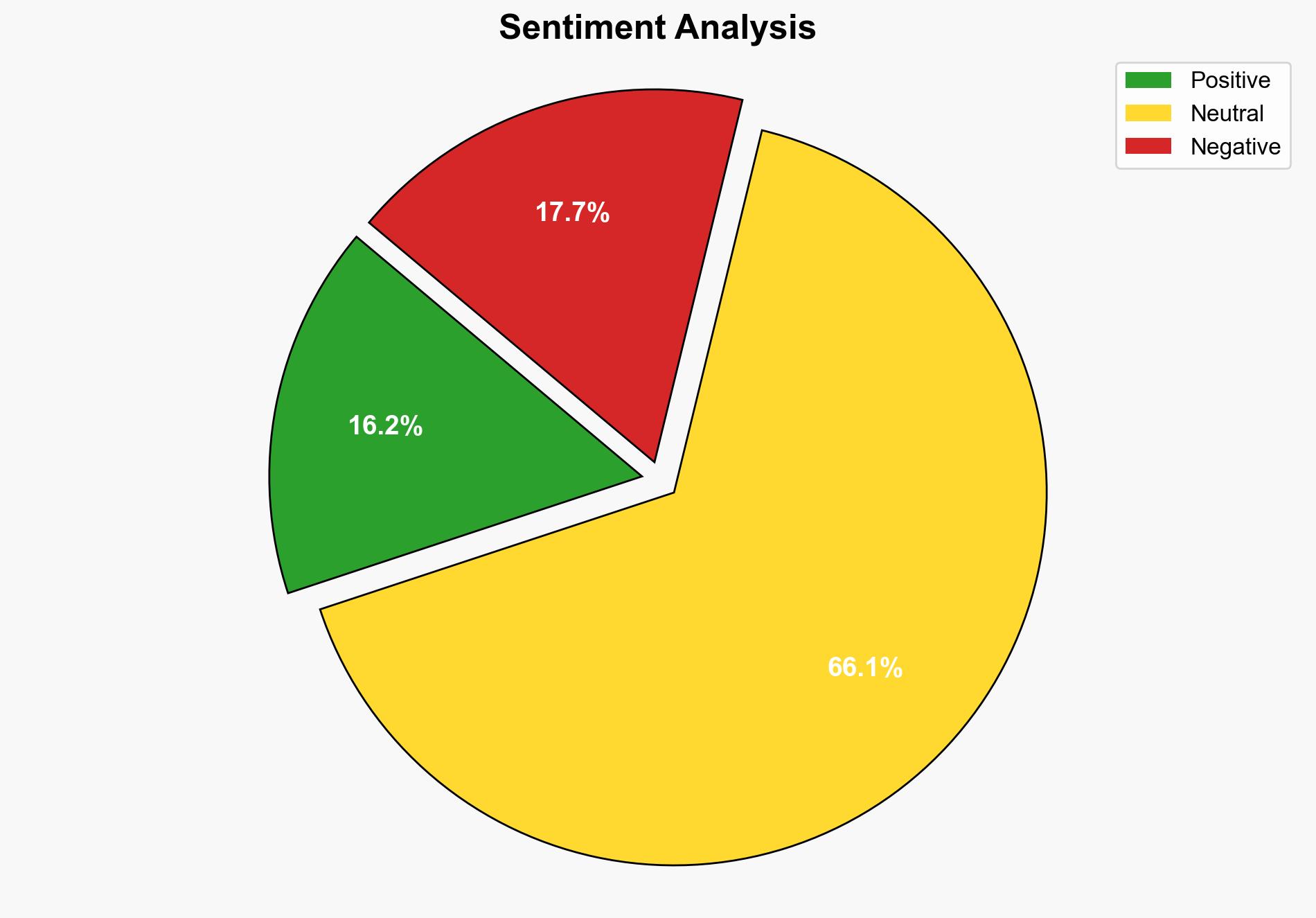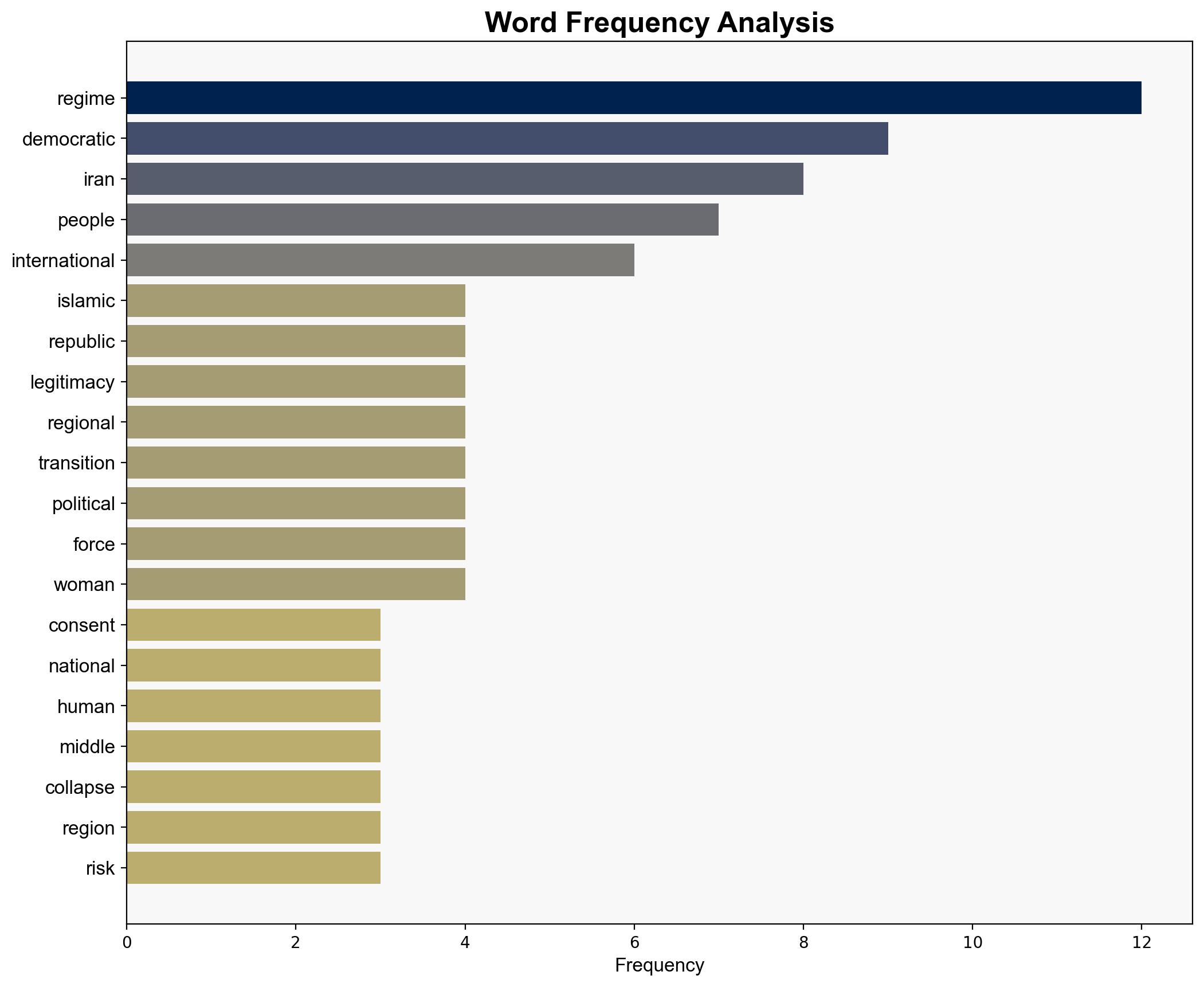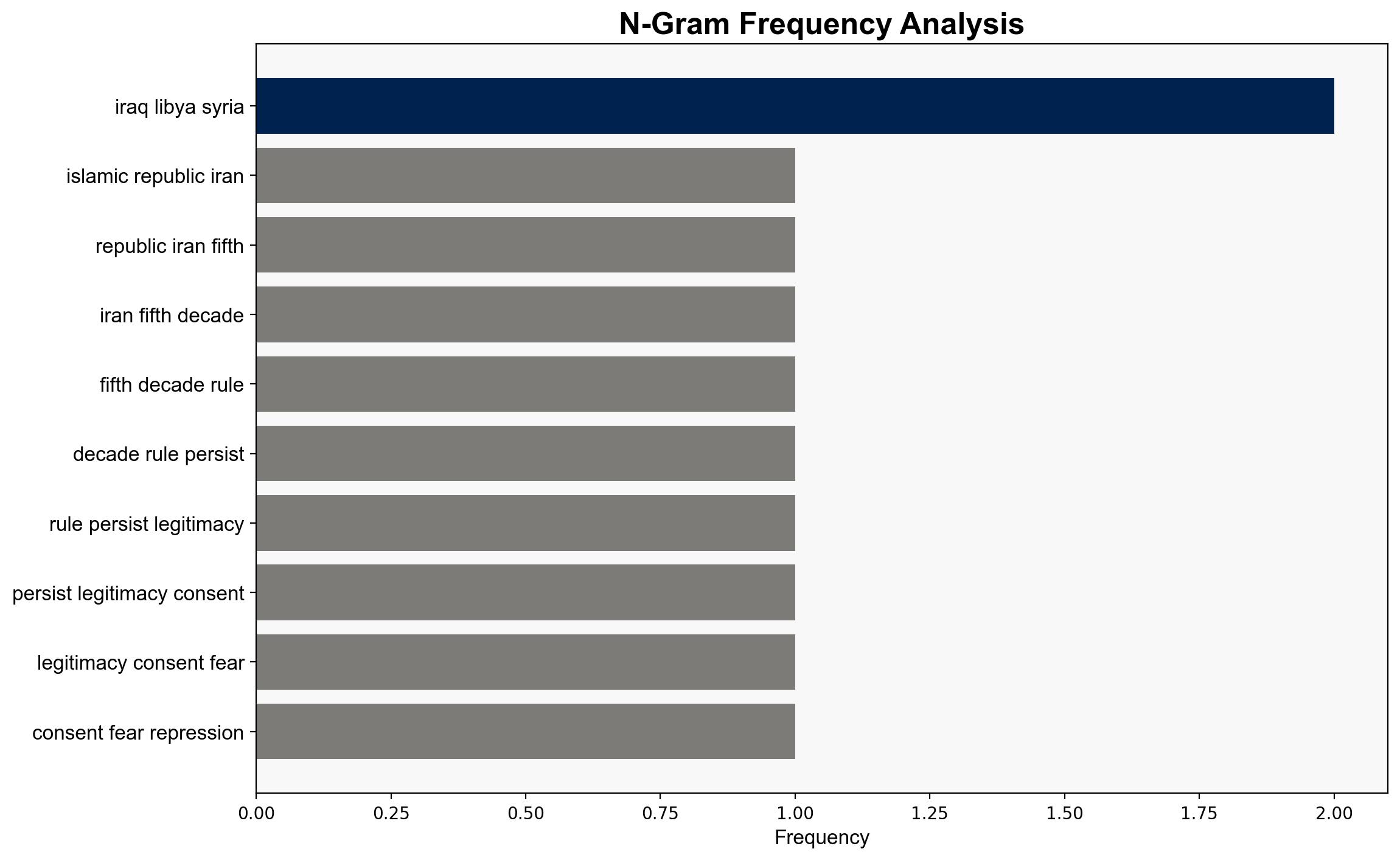Toward a Post-Islamist Iran A strategic roadmap for democratic transition – Israelnationalnews.com
Published on: 2025-08-10
Intelligence Report: Toward a Post-Islamist Iran A strategic roadmap for democratic transition – Israelnationalnews.com
1. BLUF (Bottom Line Up Front)
The most supported hypothesis is that a carefully managed transition in Iran, emphasizing civil society empowerment and regional cooperation, could lead to a stable democratic order. Confidence level is moderate due to the complex interplay of internal and external factors. Recommended action includes bolstering civil society initiatives and enhancing regional diplomatic efforts to mitigate potential violence and fragmentation.
2. Competing Hypotheses
1. **Hypothesis 1**: A managed transition focusing on empowering Iran’s civil society and regional cooperation will lead to a stable, democratic Iran. This hypothesis is supported by the potential for civil resistance movements, as evidenced by the nationwide uprising following Mahsa Amini’s death, to drive change without external military intervention.
2. **Hypothesis 2**: The collapse of the current regime without a clear transition plan will result in chaos, sectarian violence, and regional instability. This scenario draws parallels with the aftermath of regime changes in Iraq, Libya, and Syria, highlighting the risks of fragmentation and external exploitation.
3. Key Assumptions and Red Flags
– **Assumptions**:
– Hypothesis 1 assumes that civil society can effectively organize and sustain pressure for democratic reforms.
– Hypothesis 2 assumes that the regime’s collapse will inevitably lead to chaos without a pre-established transition plan.
– **Red Flags**:
– Over-reliance on civil society without considering the regime’s capacity for repression.
– Underestimating the potential for external actors to exploit internal divisions.
4. Implications and Strategic Risks
– **Patterns and Threats**: The regime’s use of proxy militias and potential for retaliatory actions pose significant risks. The destabilization of Iran could lead to broader regional conflicts, impacting global energy markets and security.
– **Escalation Scenarios**: A sudden regime collapse could trigger sectarian violence and humanitarian crises, similar to those seen in other Middle Eastern countries post-regime change.
5. Recommendations and Outlook
- Strengthen support for Iranian civil society through non-governmental organizations and international partnerships.
- Enhance intelligence sharing and diplomatic coordination with regional allies to anticipate and mitigate potential conflicts.
- Scenario Projections:
– **Best Case**: Successful democratic transition with minimal violence, leading to regional stability.
– **Worst Case**: Fragmentation and prolonged conflict, drawing in regional powers and exacerbating humanitarian issues.
– **Most Likely**: A protracted transition period with intermittent unrest and external pressures.
6. Key Individuals and Entities
– Mahsa Amini (symbol of civil resistance)
– Hezbollah, Shiite militias in Iraq, Houthis in Yemen (proxy forces)
7. Thematic Tags
national security threats, regional focus, civil society empowerment, regime change, Middle East stability




